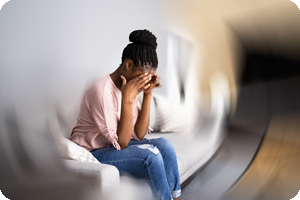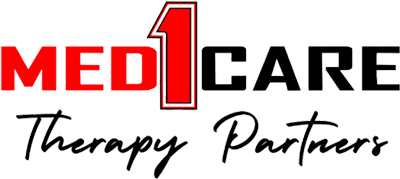
Med1Care Therapy Partner’s physical therapists specialize in vestibular rehabilitation. Dizziness is the most common complaint of adults over the age of 75.
Vestibular issues may be indicated by problems with dizziness, balance, leg strength, visual stability, neck mobility and the inner ear. Symptoms may include extreme nausea, difficulty walking, trouble getting up from a seated position and forward placement of the head.
Dizziness can occur while standing, sitting, lying down or changing position. The sensation is often described as feeling unsteady, woozy, lightheaded, on the verge of passing out, like moving while stationary, spinning, floating, swaying, tilting and whirling (vertigo).
Symptoms may be episodic or constant and last a few seconds or many hours.
Reasons for Vestibular Rehabilitation
The vestibular system is made up of many delicate pieces of bone and cartilage, including the ear’s semicircular canals, which are filled with fluid. As body position changes and the fluid moves, the ear’s sensory system sends information about balance to the brain.
Vestibular rehabilitation is most effective for people who suffer from dizziness, vertigo, difficulty balancing, falls, migraines, inner-ear problems, neck-related dizziness and conditions like stroke, brain injury, Meniere’s disease, Labyrinthitis, Vestibular neuritis and Benign Paroxysmal Positional Vertigo (BPPV).
Exercises for vestibular rehabilitation may include:
- Vision stability training
- Posture and strength training
- Stretching exercises
- Balance retraining
- Walking exercises
- Neck mobility exercises
- Ergonomic training
How We Can Help
Med1Care Therapy Partner’s experienced therapists are trained in treating vestibular conditions.
A licensed physical therapist will come to your home in Toledo, Findlay or any of the 26 counties we service. The therapist will evaluate your need for services and draft a treatment plan and set a schedule that is dedicated to helping you build a road to recovery.
Call us at 419.866.0555 to schedule a consultation. Our specialists will help you chart a course forward.
Balance exercises strengthen the muscles in your core and legs to improve your stability and prevent falls.
Here are six balance exercises to add to your fitness routine:
- Stand on one leg and raise the other to the front, side and back
- Walk an imaginary tightrope, heal to toe
- Sit in a chair and stand without using your hands for assistance
- Alternate knee lifts while walking
- Practice yoga or tai chi
- Stand on a Bosu half-circle stability ball or balance board
When these no longer present a challenge, hold the position for longer, add movement to a pose or close your eyes.

Progressive strength-building exercise is important to include in your regime two days a week.
Areas to focus on:
- Core, including abs
- Legs, including squats
- Glutes
- Back muscles
Read more about balance training here.

Vestibular balance issues are often caused by infection, medication, traumatic brain injury and inner ear problems, including poor circulation or a buildup of calcium debris in the semicircular canals.
Read more about vestibular disorders here.
